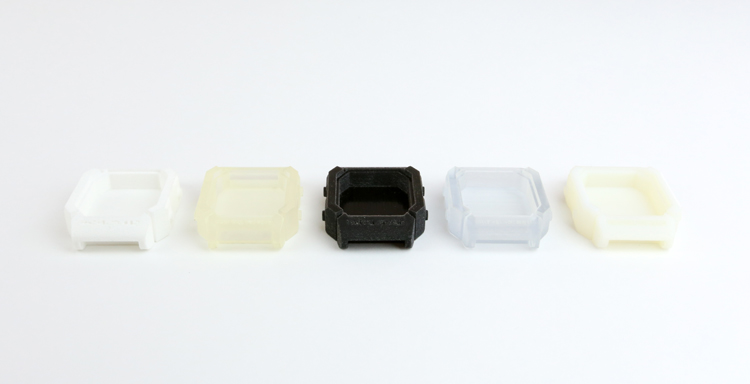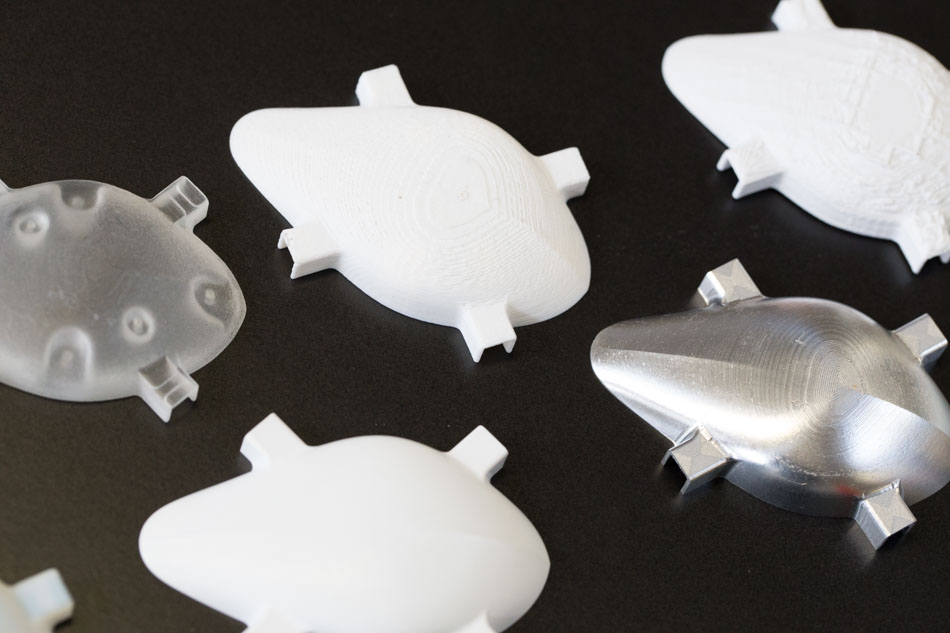Time to read: 4 min
Methods Overview
There’s a telling quote attributed to the great Renaissance artist, poet, and subtractive manufacturer, Michelangelo. When asked how he created his masterpiece David from a large chunk of marble, he remarked that he simply “chipped away at all of the stone that doesn’t look like David.”
As engineers and artists, before we can endeavor to realize an idea we must consider the best tools to use in the process.
In the most basic sense, manufacturing methods can be separated into two camps: those which are additive and those which are subtractive. Additive methods include fused deposition modeling and stereolithography, which create parts by stacking consecutive layers of material to form the shape of the part from the ground up.
Subtractive methods include machining operations like milling and CNC turning, laser cutting, wire EDM, and carving, as Michelangelo did to free David from the unrefined block of marble.
Read on for the main considerations to keep top of mind when considering which manufacturing method to use in your product development cycles.
4 Considerations for Method Selection
When deciding which manufacturing method to use, there are four broad considerations that will help inform your decision:
- Material selection
- Part quantity
- Part geometry
- Project schedule and part revisions
In assessing these considerations you’ll have a better understanding of your project requirements, which will point you toward the best tools for the job.
1. Material Selection
For Most Plastics: Additive
With additive production, the most common materials are limited to a growing list of plastic materials, including:
- ABS (Acrylonitirle butadiene styrene)
- PLA (Polylactic Acid)
- PVA (Polyvinyl Alcohol Plastic)
- Nylon
- Resins

More recently ceramics and metals have also entered the 3D printing scene, significantly broadening the types of parts which can conceivably be 3D printed. However, these materials are currently only printed on specialty machines for a high price, so they’re not yet suitable for most production needs.
Note that parts made for low-volume casting methods can use a 3D printed part to create a silicone mold used for casting in a wide variety of materials.
For More Material Variety: Subtractive
Subtractive methods can utilize a wide variety of materials, including:
- Engineering metals, such as aluminum and steel
- Wood
- Foams, like polystyrene or structural foam
- Ceramics
This variety of available materials can give you more flexibility. So if you’re engineering a very large part, for example, you can choose to cut from a piece of foam core, which will be much less expensive than producing a very large 3D printed plastic part.
2. Part Quantity
For Low Volume Production: Additive
For its speed and relative unit cost at low volumes, additive methods are typically well suited for prototype or low volume production runs in the range of one to ten parts. 3D printers can also produce a complete set of different parts all during a single run, something that would be practically impossible to achieve using subtractive methods like a mill or lathe.
For High Volume Production: Subtractive
When you need to produce a large quantity of parts, subtractive methods like machining is still generally the right approach. Modern CNC machining methods are capable of producing a high degree of part-to-part repeatability and can output large volumes of the same part in a relatively short period of time.
Additionally, molds for injection molded plastic components are created using steel dies, which are produced using subtractive manufacturing methods.
3. Part Geometry
For Organic Surfaces and Complex Features: Additive
Although CNC milling machines are constantly improving, additive methods are still the most effective way to produce parts with intricate geometry; 3D printers can produce impossible to machine features, like ‘captured’ components.
Keep in mind that the part accuracy and level of intricacy for parts created with 3D printers will be limited by factors like minimum layer thickness and material type. Higher-end materials and machines may be required to achieve desired levels of feature precision.

For Dimensional Accuracy and Repeatability: Subtractive
When it comes to precision for common functional features, like flat faces, drilled and tapped holes, counterbores, and mating components, subtractive methods will generally produce results with the highest degree of repeatability and dimensional accuracy.
This is primarily because subtractive methods can create parts using very dense, hard materials like steel and aluminum, which can be machined to a very high degree of precision.
4. Project Schedule and Part Revisions
For Faster Lead Times and Iterative Prototyping: Additive
One of the best features of 3D printing is the lead time compared with machined parts. The use of additive technology can shorten your production cycles by iterating and testing revised designs more quickly than would otherwise be possible with one-off machined components.
In contrast, part revisions on machined parts may require changes to programmed tool paths, setup, and number of machining operations – changes which all take significant time.
Best practice here is to plan for several 3D printed iterations of a part design prototype to test fit and function before manufacturing components with machining methods.
Main Takeaways
There’s a best tool for every job and to make the right choice between additive and subtractive methods, consider your design requirements.
As a starting point, here are 3 questions to ask yourself:
1. What type of features does your product have?
- small organic and intricate features → additive methods
- large or sharp features, drilled and tapped holes or other fastening features →subtractive methods
2. What type of material do you want to work with?
- thermoplastics and resins → additive methods
- materials like metals, wood, or foam → subtractive methods
3. How many units do you want to produce?
- low-volume production or iterative prototyping → additive methods
- large-volume production runs → subtractive methods
Through an evaluation of your design criteria, the best methods and tools for each phase of your production cycle will become clear.

